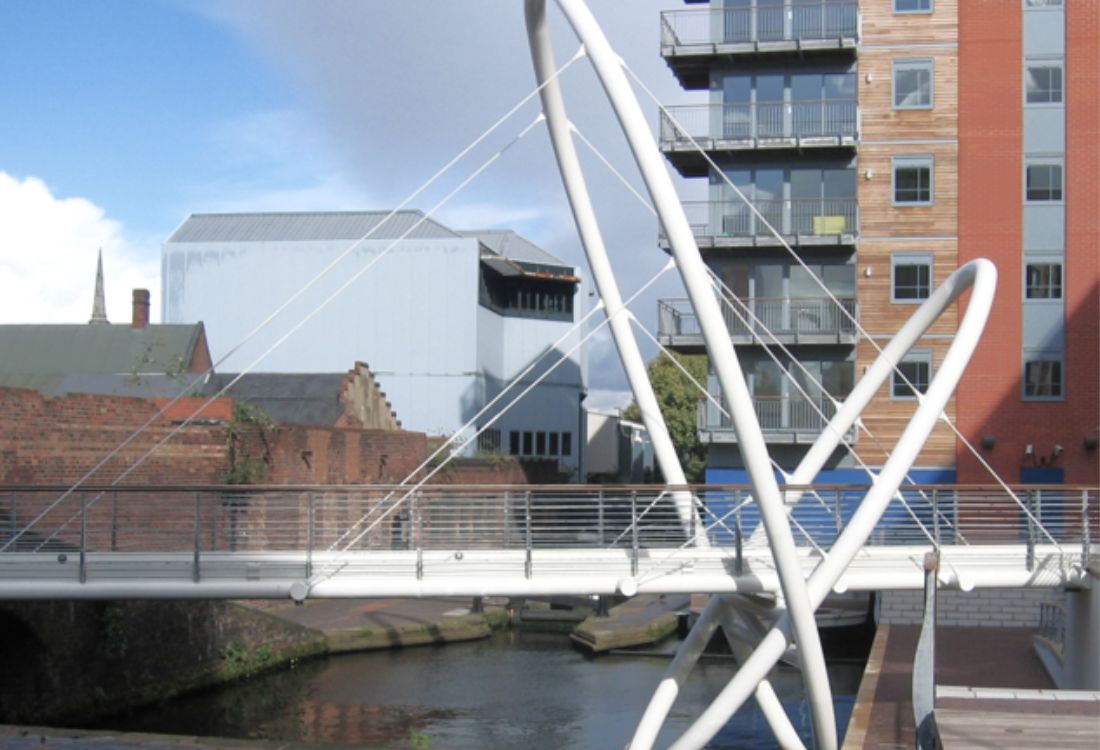
Bespoke Engineering In Architectural Footbridges: From Concept To Design
Bespoke engineering is often required in the design of many civil structures, but particularly with architectural footbridges that are not only safe but ergonomic or aesthetically pleasing. With the public and local authority planning departments more focused than ever on the potential visual impact of bridges on the local environment, designers must blend practicality and safety with appearance and sustainability, using materials and design principles that resist the stresses of footfall and environmental factors.
So, what are the key considerations for civil structural design engineers when planning architectural footbridges?
Structural Integrity
It goes without saying that all footbridges must be safe. Therefore, our bridge design is underpinned by an unwavering commitment to structural integrity. We conduct a thorough analysis to ensure that the bridge can withstand a variety of loads, including dead loads (the weight of the bridge itself), live loads (the weight of pedestrian traffic), environmental stresses, and even unforeseen forces (e.g. a vehicle accidentally striking the structure). Through this process, we ensure that the bridge is robust enough to withstand these varying conditions, guaranteeing safety and durability throughout its lifespan.
Site Analysis
Site analysis is the foundation for an effective engineering process, and requires an extensive examination of the bridge's proposed location. This involves assessing soil conditions, understanding the site's topography, and analysing hydrological factors. Detailed scrutiny informs our design decisions, ensuring that the bridge not only blends in with its environment but also interacts with it in a sustainable manner.
Understanding Usage Dynamics
Understanding how a footbridge will be used is crucial in our design process, as it informs the load analysis to define the types of loads to which the bridge will be exposed. This helps us to determine the required strength of the structure and the most suitable materials to accommodate both everyday use and peak loads, thereby ensuring the bridge's resilience under different usage conditions – and ensuring it can withstand the heaviest of foreseeable loads.
Environmental Factors
Environmental factors, such as temperature fluctuations, wind action, or seismic activity, can significantly impact a bridge's structural integrity, durability, and functionality. During structural planning, it is essential to consider the worst-case scenario to ensure that environmental extremes don’t render the bridge unsafe. This may involve incorporating flexible design elements and using robust materials to withstand varying environmental challenges, in order to guarantee the bridge's resilience and safety under extreme conditions.
Material Properties
Selecting the right materials is critical in bridge design. We conduct a deep dive into the properties of potential materials, considering factors such as durability, corrosion resistance, and maintenance requirements. The goal is to ensure the bridge’s long-term functionality and aesthetic appeal while being conscious of cost and environmental impact.
Foundation Design
Foundation design is a critical but often underappreciated aspect of bridge engineering. It involves determining the appropriate support structures for the bridge. We consider various factors, including soil conditions, geotechnical factors, and structural loads. The foundation must be robust enough to support the bridge while respecting the natural landscape.
Find Out More
For more information about how we can help design your architectural footbridge, please get in touch with Richard Fenton at rfenton@fentonholloway.com.

/Richard-Fenton-Civil-Structures-Long.webp?width=735&height=268&name=Richard-Fenton-Civil-Structures-Long.webp)
.png?width=365&height=215&name=Brochure%20CTA%20(1).png)